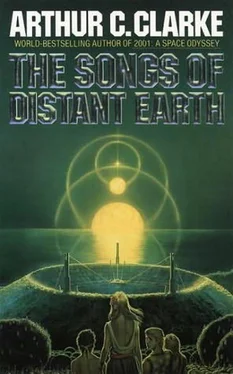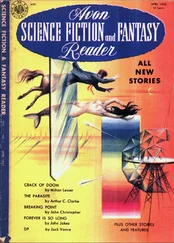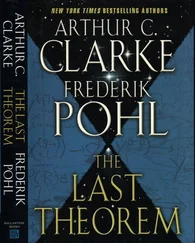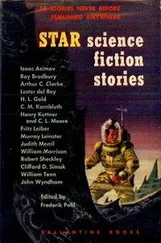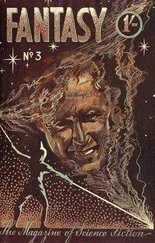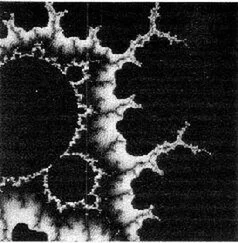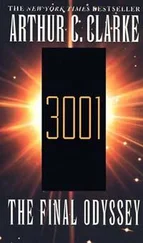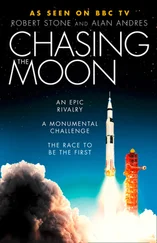“Thanks,” Loren said after a while. “That’s much better. But please don’t stop.”
“Did you really think I would?” she whispered.
And presently, between two worlds, they became one.
The membership of the Thalassan Academy of Science was strictly limited to the nice round binary number 100000000 — or, for those who preferred to count on their fingers, 256. Magellan’s Science Officer approved of such exclusivity; it maintained standards. And the academy took its responsibilities very seriously; the president had confessed to her that at the moment there were only 241 members, as it had proved impossible to fill all the vacancies with qualified personnel.
Of those 241, no less than 105 were physically present in the academy’s auditorium, and 116 had logged in on their comsets. It was a record turnout, and Dr Anne Varley felt extremely flattered — though she could not suppress a fleeting curiosity about the missing 20.
She also felt a mild discomfort at being introduced as one of Earth’s leading astronomers — even though, alas, by the date of Magellan’s departure, that had been all too true. Time and Chance had given the late director of the — late — Shklovskii Lunar Observatory this unique opportunity of survival. She knew perfectly well that she was no more than competent when judged by the standards of such giants as Ackerley or Chandrasekhar or Herschel — still less by those of Galileo or Copernicus or Ptolemy.
“Here it is,” she began. “I’m sure you’ve all seen this map of Sagan — the best reconstruction possible from fly-bys and radioholograms. The detail’s very poor, of course — ten kilometres at the best — but it’s enough to give us the basic facts.
“Diameter — fifteen thousand kilometres, a little larger than Earth. A dense atmosphere — almost entirely nitrogen. And no oxygen — fortunately.”
That ‘fortunately’ was always an attention-getter; it made the audience sit up with a jolt.
“I understand your surprise; most human beings have a prejudice in favour of breathing. But in the decades before the Exodus, many things happened to change our outlook on the Universe.
“The absence of other living creatures — past or present — in the solar system and the failure of the SETI programs despite sixteen centuries of effort convinced virtually everyone that life must be very rare elsewhere in the universe, and therefore very precious.
“Hence it followed that all life forms were worthy of respect and should be cherished. Some argued that even virulent pathogens and disease vectors should not be exterminated, but should be preserved under strict safeguards. “Reverence for life” became a very popular phrase during the Last Days and few applied it exclusively to human life.
“Once the principle of biological noninterference was accepted, certain practical consequences followed. It had long been agreed that we should not attempt any settlement on a planet with intelligent life-forms; the human race had a bad enough record on its home world. Fortunately — or unfortunately! — this situation has never arisen.
“But the argument was taken further. Suppose we found a planet on which animal life had just begun. Should we stand aside and let evolution take its course on the chance that megayears hence intelligence might arise?
“Going still further back — suppose there was only plant life? Only single-cell microbes?
“You may find it surprising that, when the very existence of the human race was at stake, men bothered to debate such abstract moral and philosophical questions. But Death focuses the mind on the things that really matter: why are we here, and what should we do?
“The concept of “Metalaw” — I’m sure you’ve all heard the term — became very popular. Was it possible to develop legal and moral codes applicable to all intelligent creatures, and not merely to the bipedal, air-breathing mammals who had briefly dominated Planet Earth?
“Dr Kaldor, incidentally, was one of the leaders of the debate. It made him quite unpopular with those who argued that since H. sapiens was the only intelligent species known, its survival took precedence over all other considerations. Someone coined the effective slogan: “If it’s Man or Slime Moulds, I vote for Man!”
“Fortunately, there’s never been a direct confrontation — as far as we know. It may be centuries before we get reports from all the seedships that went out. And if some remain silent — well, the slime moulds may have won…
“In 3505, during the final session of the World Parliament, certain guidelines — the famous Geneva Directive — were laid down for future planetary colonization. Many thought that they were too idealistic, and there was certainly no way in which they could ever be enforced. But they were an expression of intent — a final gesture of goodwill towards a Universe which might never be able to appreciate it.
“Only one of the directive’s guidelines concern us here — but it was the most celebrated and aroused intense controversy, since it ruled out some of the most promising targets.
“The presence of more than a few percent oxygen in a planet’s atmosphere is definite proof that life exists there. The element is far too reactive to occur in the free state unless it is continually replenished by plants — or their equivalent. Of course, oxygen doesn’t necessarily mean animal life, but it sets the stage for it. And even if animal life only rarely leads to intelligence, no other plausible route to it has ever been theorized.
“So, according to the principles of Metalaw, oxygen-bearing planets were placed out of bounds. Frankly, I doubt so drastic a decision would have been made if the quantum drive hadn’t given us essentially unlimited range — and power.
“Now let me tell you our plan of operation, when we have reached Sagan 2. As you will see by the map, more than fifty per cent of the surface is ice-covered, to an estimated average depth of three kilometres. All the oxygen we shall ever need!
“When it’s established its final orbit, Magellan will use the quantum drive, at a small fraction of full-power, to act as a torch. It will burn off the ice and simultaneously crack the steam into oxygen and hydrogen. The hydrogen will quickly leak away into space; we may help it with tuned lasers, if necessary.
“In only twenty years, Sagan 2 will have a ten per cent O2 atmosphere, though it will be too full of nitrogen oxides and other poisons to be breathable. About that time we’ll start dumping specially developed bacteria, and even plants, to accelerate the process. But the planet will still be far too cold; even allowing for the heat we’ve pumped into it, the temperature will be below freezing everywhere except for a few hours near noon at the Equator.
“So that’s where we use the quantum drive, probably for the last time. Magellan, which has spent its entire existence in space, will finally descend to the surface of a planet.
“And then, for about fifteen minutes every day at the appropriate time, the drive will be switched on at the maximum power the structure of the ship — and the bedrock on which it is resting — can withstand. We won’t know how long the operation will take until we have made the first tests; it may be necessary to move the ship again if the initial site is geologically unstable.
“At a first approximation, it appears that we’ll need to operate the drive for thirty years, to slow the planet until it drops sunward far enough to give it a temperate climate. And we’ll have to run the drive for another twenty-five years to circularize the orbit. But for much of that time Sagan 2 will be quite livable — though the winters will be fierce until final orbit is achieved.
Читать дальше
